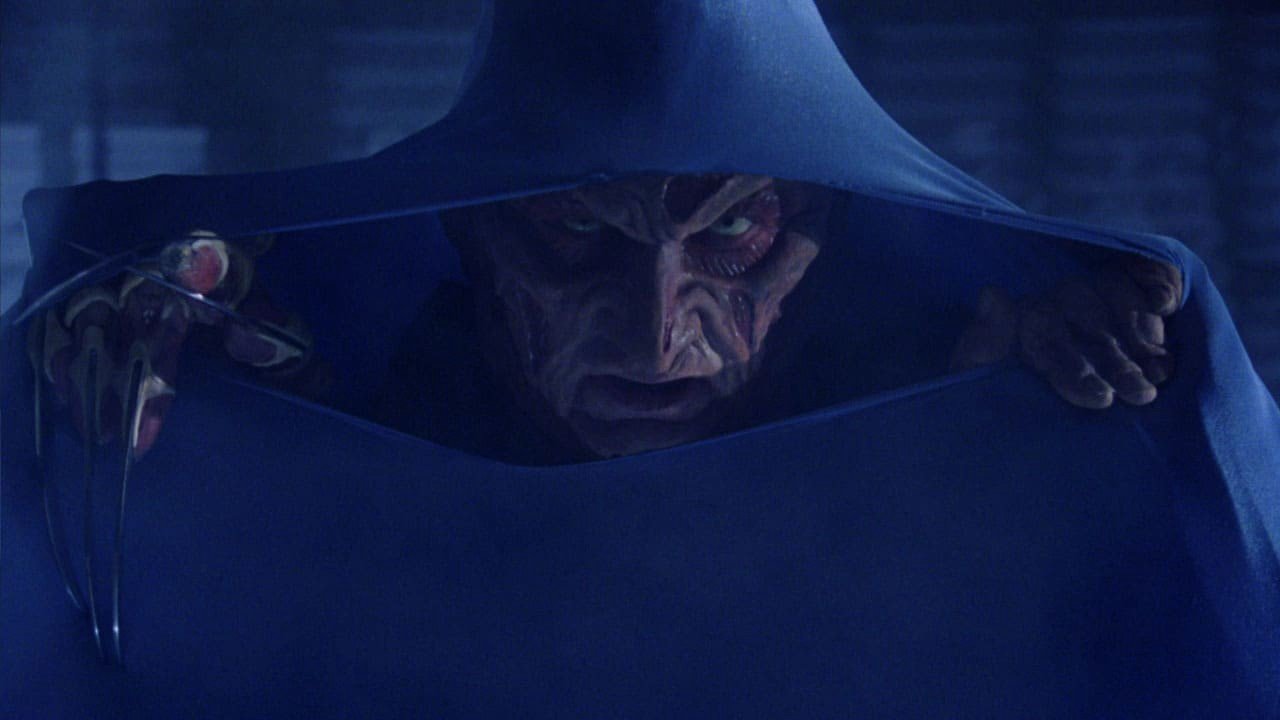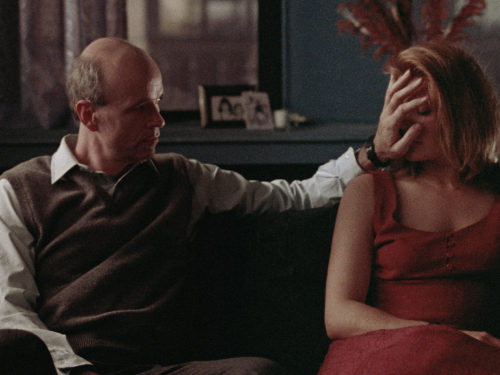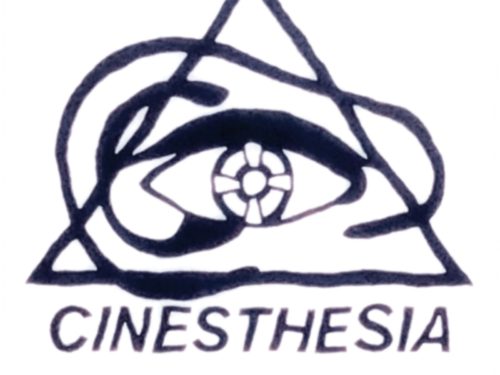Craven’s return to the Elm Street franchise resurrects Freddy Krueger and follows the evolution of evil
The title Freddy’s Dead: The Final Nightmare reads like a challenge. For a franchise that perpetually defeated its killer, the concept of villainous mortality in A Nightmare on Elm Street is shaky at best. The pipe bomb Freddy’s daughter sticks in his chest at the end of the franchise’s sixth installment seems to have done the trick in a physical sense, but Freddy Krueger and true nightmares don’t really die: They evolve.
Wes Craven knew better than anyone how his most famous creation slipped out of his control. When Fred Krueger debuted in A Nightmare On Elm Street in 1984, he was a child killer who found a way to enter dreams and exact his revenge upon the vigilante families who burned him to death. Within a few years, Freddy, played masterfully by Robert Englund, became an international sensation; Craven sold the rights to the character after the first film. With each sequel, Freddy was slowly diluted from a downright terrifying monster to a wisecracking asshole with supernatural abilities. One of Craven’s gravest complaints about the Nightmare franchise is how repetitious he felt they became, with Freddy simply needing a new group of impressionable, interchangeable teens to slay. To his point, in Nightmare 4: The Dream Master (1988), Freddy meets with Alice (Lisa Wilcox), a character who can draw people into her dreams, over eyeball pizza at the “Crave-Inn” diner. He looks her square in the eyes and says, “Bring me more.” And though at least one teen always outfoxes him, Freddy could only be defeated so many times before his ultimate death became the selling point. Fred Krueger always finds a way back. Though at some point, he had to die. That’s when he becomes most interesting.
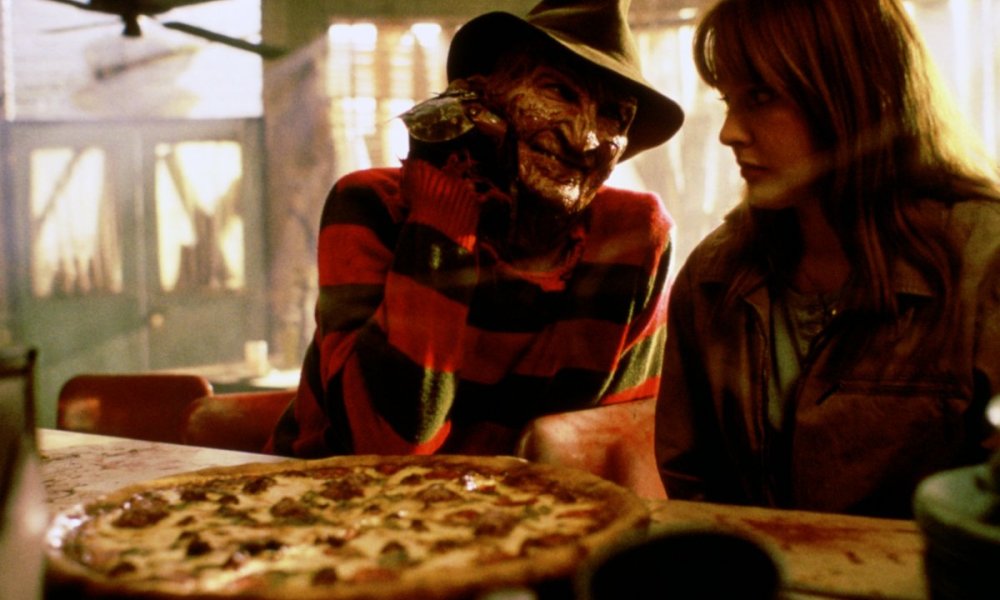
After cranking out Nightmares at a yearly pace for seven films, New Line Cinema asked Craven to direct a final series installment after they decided they had killed Freddy too soon. Who better to resurrect him than his creator, and the man who missed out on most of the profits of the series? New Line — “the house that Freddy built” — had received word that Craven felt he hadn’t been treated as fairly as he should have, and this was their olive branch, a peace offering that reportedly came with backpay. But after Craven watched the rest of the series, he realized Freddy had changed. For New Nightmare, he had to explore new territory. This Freddy is an ancient evil who has been captured in the story of Elm Street. When a chance to escape arises, the evil realizes the strength of the Freddy Krueger character and steals his form as a means of entering our dimension. His only way into our world, though, is to defeat the gatekeeper who first defeated and humiliated him: Nancy Thompson (Heather Langenkamp) of the original Nightmare. Craven needed his stars — Langenkamp (who he also cast as the lead in 1987’s Nightmare 3: Dream Warriors, the only other installment he wrote) and Robert Englund — to reunite, with the actors playing themselves. Craven also plays himself, writing the new script in real time, a translation of his nightmares.
New Nightmare gathers Craven’s favorite topics into one arena and allows them all to go to war: God and ancient evils, families in crisis, nightmares, and Hollywood. We meet Heather in an unstable world. The film opens with furnaces firing and a razor glove gone awry on the set of a new Wes Craven film. Heather’s prop-master husband, Chase (David Newsom), designed a new animatronic Freddy glove, and as is hinted by Heather’s pajamas, the runaway glove’s impromptu murder spree is the tail end of a scene-setting nightmare. She’s knocked out of the dream by the first of a series of earthquakes. But a cut on Chase’s finger tells Heather that these nightmares aren’t to be ignored.
Related: Wes Craven’s Shocker 1989): Channel Surfing With A Master Of Horror by Bennet Glace
The extent of Freddy’s presence in Heather’s life reveals itself slowly. She thinks she’s having nightmares because of a resurfaced phone stalker, but she quickly realizes that the dreams may be more than fiction. We first see Freddy in the flesh at an Elm Street anniversary TV interview, right after the host asks if Heather shows her young son, Dylan (Miko Hughes), her horror films. Robert Englund then cuts through a screen and surprises her in full Freddy costume. He hams it up for the cameras, gallivants around the studio and slaps high-4’s with a cosplaying child sporting a razor glove. Englund absorbs the spotlight in totality. Heather sees that Freddy still has a sinister edge, waiting to reemerge. Soon, Freddy is everywhere in her world: He’s on the phone and the unplugged TV; he’s in the walls; he’s on Robert Englund’s easel, Wes Craven’s mind, and in Dylan’s oatmeal.
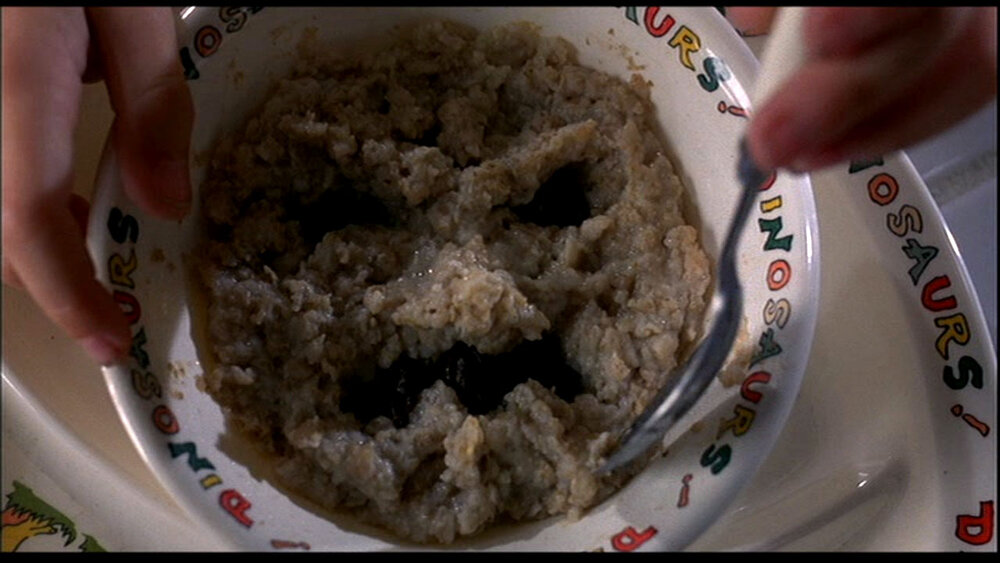
Dylan has his own nightmares in which he and his trusty stuffed T-Rex, named Rex, are thwarting off “the scary man.” Rex serves as the principal gatekeeper, a dream warrior fighting off the first attacks from Freddy. One morning Rex is on the floor with four razor stripe gashes in his side, his cotton innards spilling out. Dylan sees scenes from A Nightmare on Elm Street on the TV and reacts with a screaming fit. From there he begins to recite the “one, two, Freddy’s coming for you” rhyme, each time looking more possessed. In one of Heather’s dreams, he tapes kitchen knives to his fingers, just like Freddy’s. Heather visits Wes Craven to discuss the new Elm Street script, and he warns her that whatever this force is that is fueling his nightmares and driving his writing, it will attack her where she is most vulnerable — her family. She knows a battle is coming, and Craven tells her the only way to triumph is for her to play the role of Nancy one last time.
Another of Craven’s favorite topics for horror is the family being torn apart. In New Nightmare, Freddy quickly kills Heather’s husband and begins to torment her son. Dylan is the motor propelling Heather and Freddy into battle. Over the course of the film, he falls from the top of a play structure, and all the way into the depths of hell. Shortly after his father’s death, Dylan asks his mom the unanswerable questions: Where’s daddy? Do you have to die to see God? Why does God let bad things happen? “I honestly don’t know,” is all she can say. Heather’s biggest fear is that Dylan may be showing signs of a genetic mental illness. When evil can climb out of your bed, surely there must be a counteracting force with a physical presence you can feel, right? Though his mother catches him from his fall off the play structure, his outreach to God goes unanswered. Freddy is the one who reaches back on his next fall. Craven’s presentation of religion seems to be encapsulated here. In the battle against true evil, religion seems to be little more than a silent comfort. The hands of evil are always open and ready, especially for a child who can tell his mother, “God wouldn’t take me.”
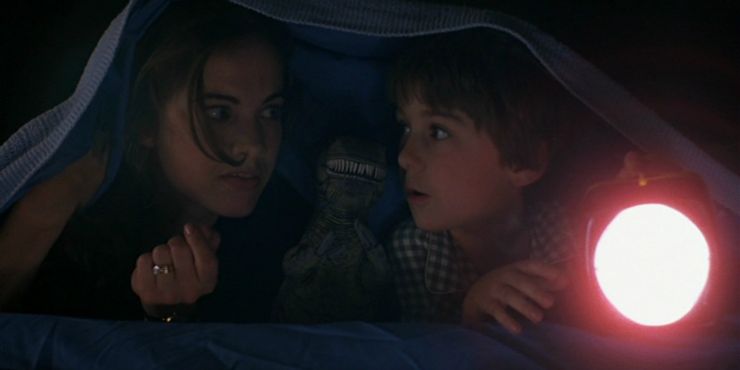
Craven wasn’t interested in just making a child killer scary again. The resurrected Freddy’s goal is to enter the world and kill innocence. Craven said he was exploring the primal evil that binds civilizations together and the cyclical violence that comes with establishing social order. After order is in place, the violence becomes the stuff of history and legends in the periods of calm that follow. That’s how this evil is trapped in Elm Street. The closest parallel to this Freddy is Pennywise the Clown from Stephen King’s novel It (1986), an evil that haunts the children of Derry by taking the physical form of their greatest fears. Pennywise has always been in Derry in the same way New Nightmare’s evil has always been present, whether on the loose or trapped like a genie in a bottle. The conclusion of the original Elm Street franchise allowed Freddy’s story to slip from cultural relevance. The entity has a chance to escape from the tale it has been imprisoned in, and it chooses to keep Freddy Krueger’s form because he is the perfect corporeal realization of evil and fear.
Freddy quickly gains power. And because this is a new evil trying on Freddy’s leather trousers for the first time, we see familiar kills and tactics as his transformation is realized. In a callback to the infamous ceiling scene of the first film, Freddy attacks Dylan’s babysitter, Julie (Tracy Middendorf), in a hospital as Dylan falls under a sedative’s spell. Julie can’t see Freddie as he rises in front of an X-Ray screen, but he walks on the walls, drags her across the room, and smiles at Dylan as he kills her on the ceiling, leaving the hospital staff baffled. These familiar attacks aren’t bland like some of the 2010 remakes’ attempts to simply redo the same film. They feel more like Craven reclaiming the character, making sure his signature is the one that stays with Freddy forever.
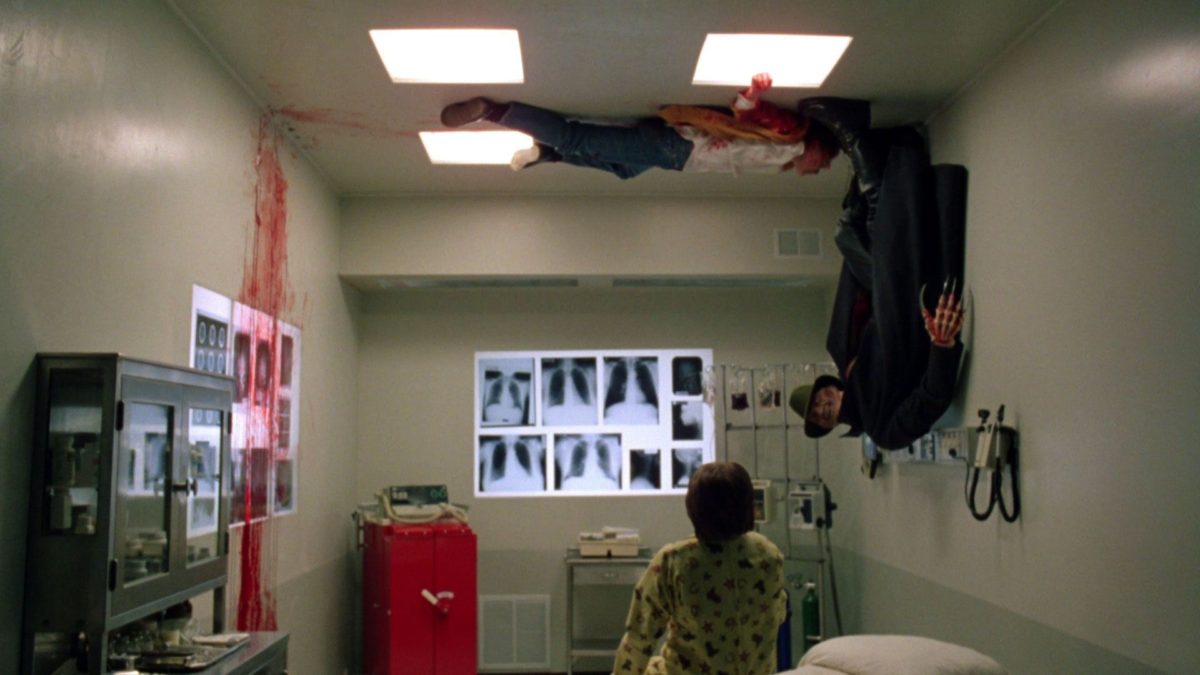
When Heather runs home from the hospital, she crosses over into the franchise’s most crucial sequence. She sees Freddy quite literally become a puppet master in the clouds. He lifts Dylan above cars on the highway and summons an army of minions. For once, we seem to go inside Freddy’s dream. Heather finds John Saxon waiting for her at home, and as they talk, he starts to call her Nancy. He has no idea why she’s calling him John, and before he steps into his car, Heather sees his police badge from the first film where he played her father. When she turns around, she’s on Elm Street, outside the house where she and Freddy first battled for the cameras. Her only choice is to follow Dylan’s breadcrumb trail of sleeping pills and dive into Hell. Together, Dylan and Heather make a final stand against Freddy, aided by Dylan’s favorite story, Hansel and Gretel. When they trap him in the furnace from the opening scene, his face morphs into the classic face of the Devil with horns and a serpent’s tongue. When they wake up, Craven’s script is on the floor. For the time being, evil appears to be trapped in a story again.
****
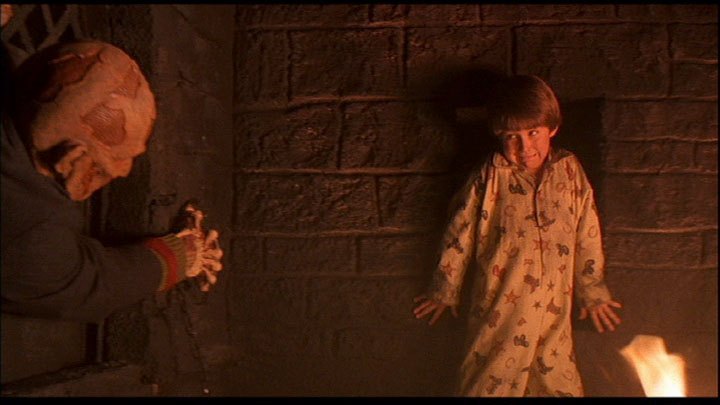
I recently attended a theatrical screening of The Hills Have Eyes (1977). Craven has said that the film is meant to upset people. The speaker who introduced the film said as much and warned that the film was made before horror became funny and cushy. But within minutes giggles spread throughout the theater. The first few were excusable. Then as the movie took its darkest turns and the family squares off with evil, the laughs grew louder. People were giggling during the rape scene, when the mother is shot at close range, when the father is burned alive and later eaten by cannibals. I can’t imagine anything more morally repulsive for Craven than hearing an audience laughing during such a film — Not at it, but with.
“If you design a scary movie, the first thing that you have to frighten your audience with is yourself,” Craven once said. He was referencing how he saw The Texas Chain Saw Massacre (1974) and wondered what vile tribe of humans could have created such a depraved work. Eventually, he realized that’s how people viewed him and his own boundary-pushing pictures. It then morphed into a sense of responsibility: “The filmmaker has to be a person who they cannot predict what he or she will do next. And he or she will cross all the forbidden barriers.” Craven charged across those barriers. That’s why it felt so strange to hear laughter during one of his most effective films. The same man who was once derided for being an untouchable heathen now has audiences that are entirely comfortable, at home even, in the decrepit environments he created as a means to torment us. It’s the paradoxical evolution of horror films: These films that were created as a way to communicate humanity’s most awful tendencies have spawned a safe space from the torments of reality where anyone can laugh, cheer, and jeer as awful things happen to people on screen. What would Craven think of a theater snickering at those scenes? Where can this genre go when horror has become laughable and fear a joke? And isn’t Craven at least partially responsible for helping introduce this ironic disposition into horror with Scream?
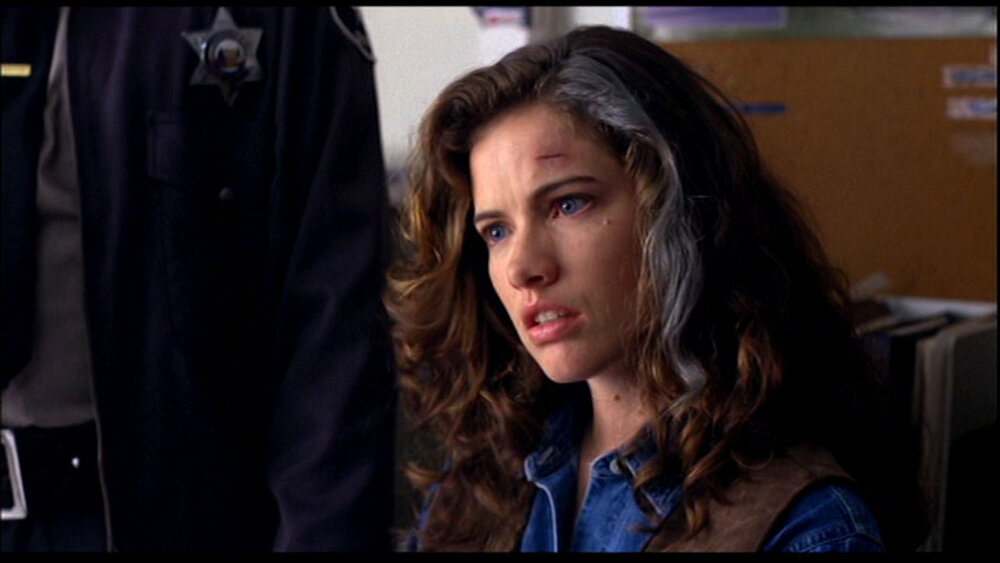
So much has been made of Wes Craven’s youth and the fact that films were considered evil in his strict Baptist upbringing. As a child he was forbidden to watch anything but the occasional Disney movie. Despite his lack of formative film exposure, he’s still credited with creating three of the most important films and franchises in horror. Only a few years after leaving home, he produced what is still considered to be one of the most evil films ever made. By materializing the most horrific things he could imagine, The Last House on the Left (1972) rezoned the boundaries of horror and redefined how violence could be portrayed onscreen. A Nightmare on Elm Street launched one of the all-time great villains and found Craven infiltrating dreams to haunt audiences. With Scream (1996), Craven and screenwriter Kevin Williamson rewrote the playbook of how horror movies could interact with the laws of all things scary on film.
The three epoch shifts of his career are all worthy of the acclaim heaped upon them, but it was in New Nightmare that Craven laid the groundwork for the metatextual world of Scream, and so many other films to follow. And though Last House remains his most radical film overall, New Nightmare is his most radical approach to narrative. In essence, this completed the bridge between his most famous films by both returning to the roots that made his name a source of fear, and by creating his own metaverse. Much like how the film brings us back to Elm Street, Craven’s career came full circle here. For my money, this is Craven’s most crucial film. He approached it without irony and made the most serious entry in the series. That’s a true feat, considering how the Scream sequels would later water down the meta world with films about a franchise being created out of the events of the first Scream film, with the original characters interacting with the actors playing them. Those films — and the Scary Movie spoofs that proliferated shortly after — made horror feel safe. This was Craven at the peak of his powers, where he executed a brilliant idea from start to finish.
As for Freddy, he’ll be back — won’t he? The only question is when, and in what form.
Find the complete October Horror 2021 series here:
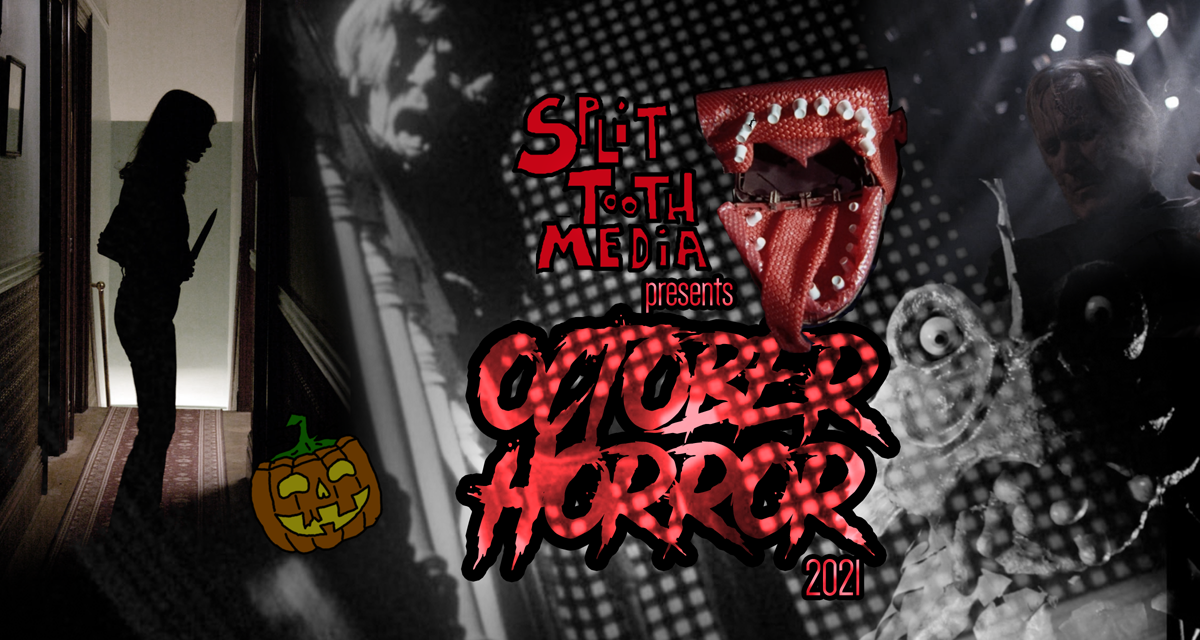
Stay up to date with all things Split Tooth Media and follow Craig on Twitter
(Split Tooth may earn a commission from purchases made through affiliate links on our site.)

